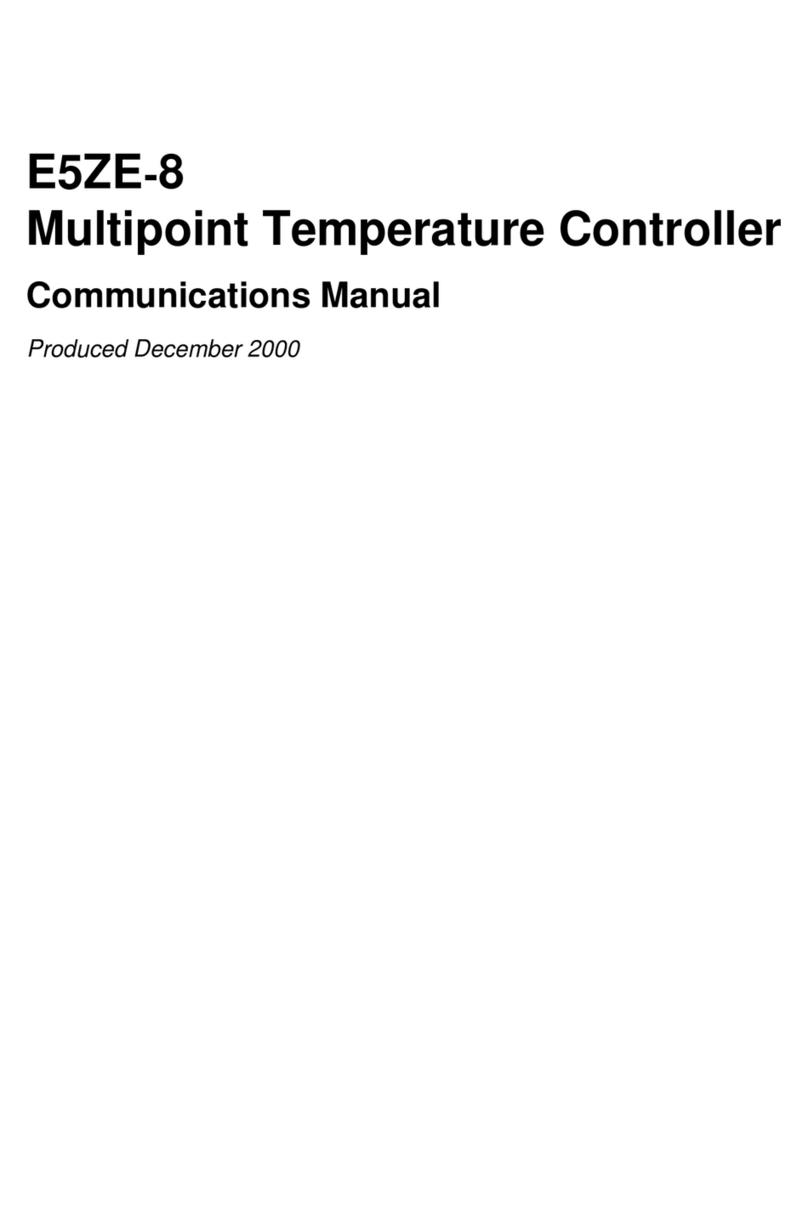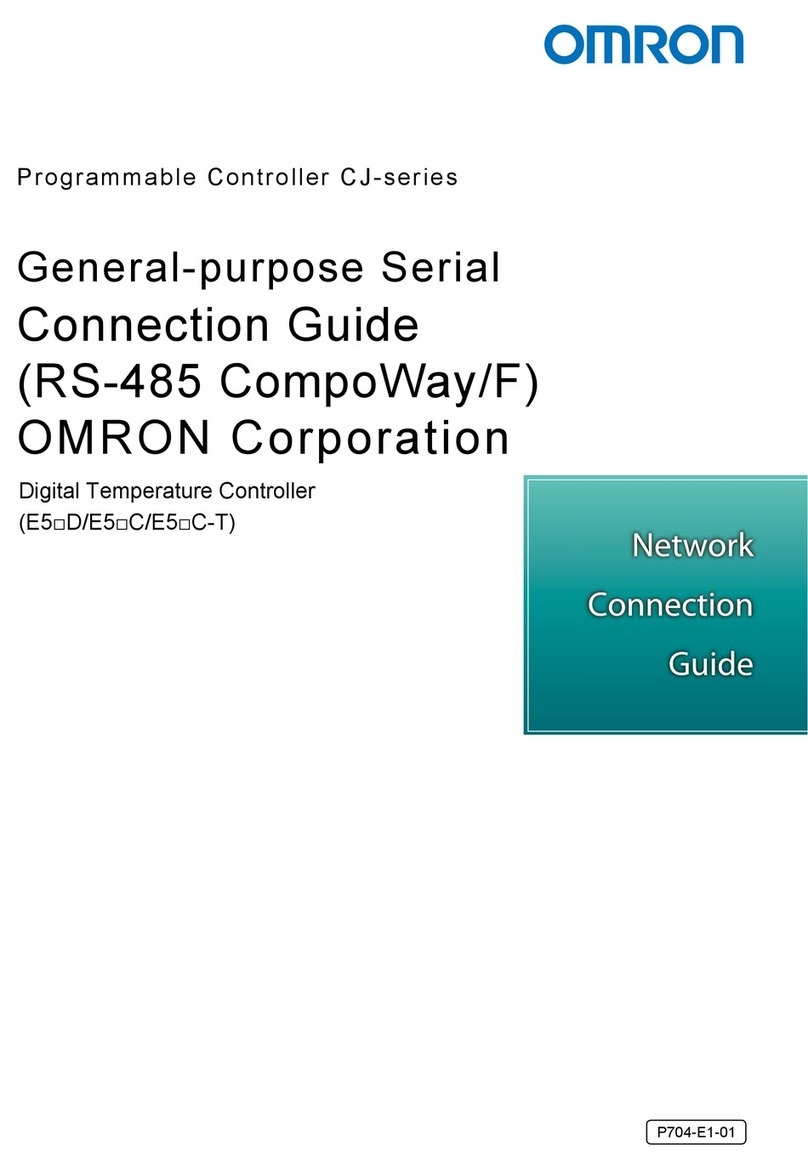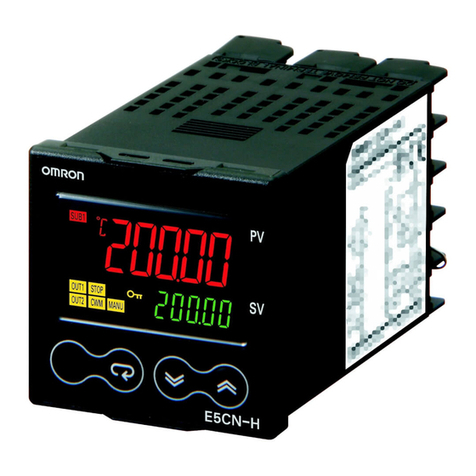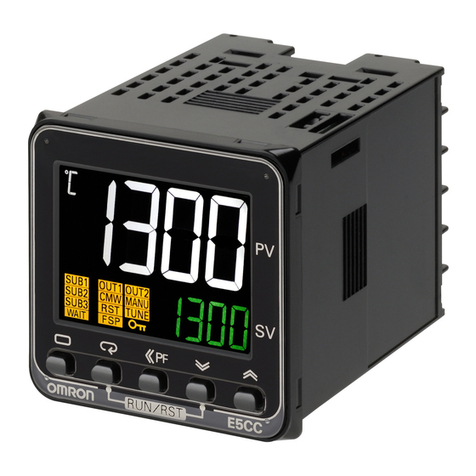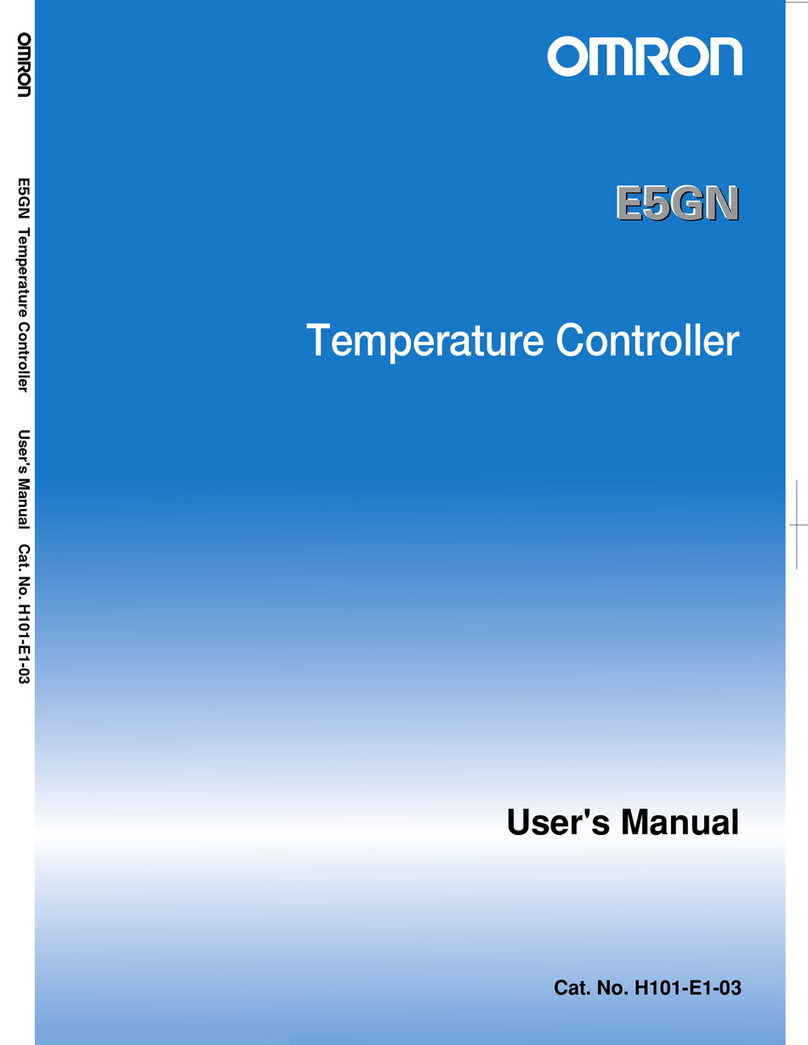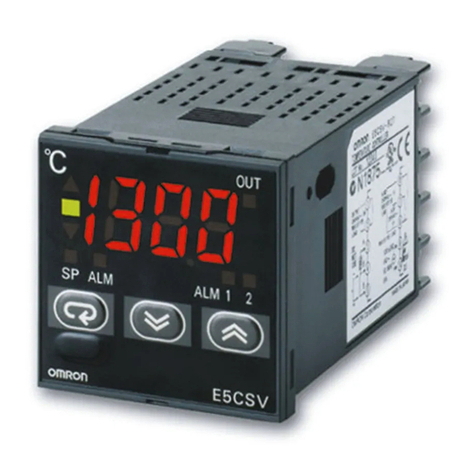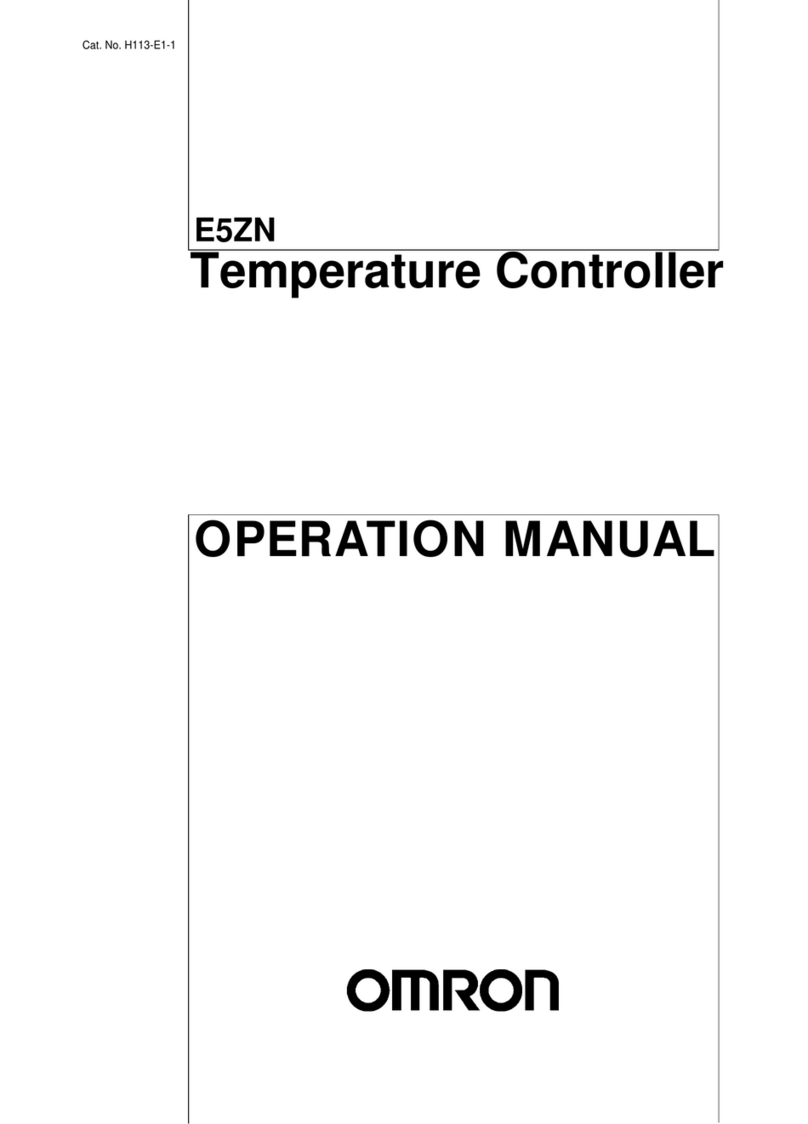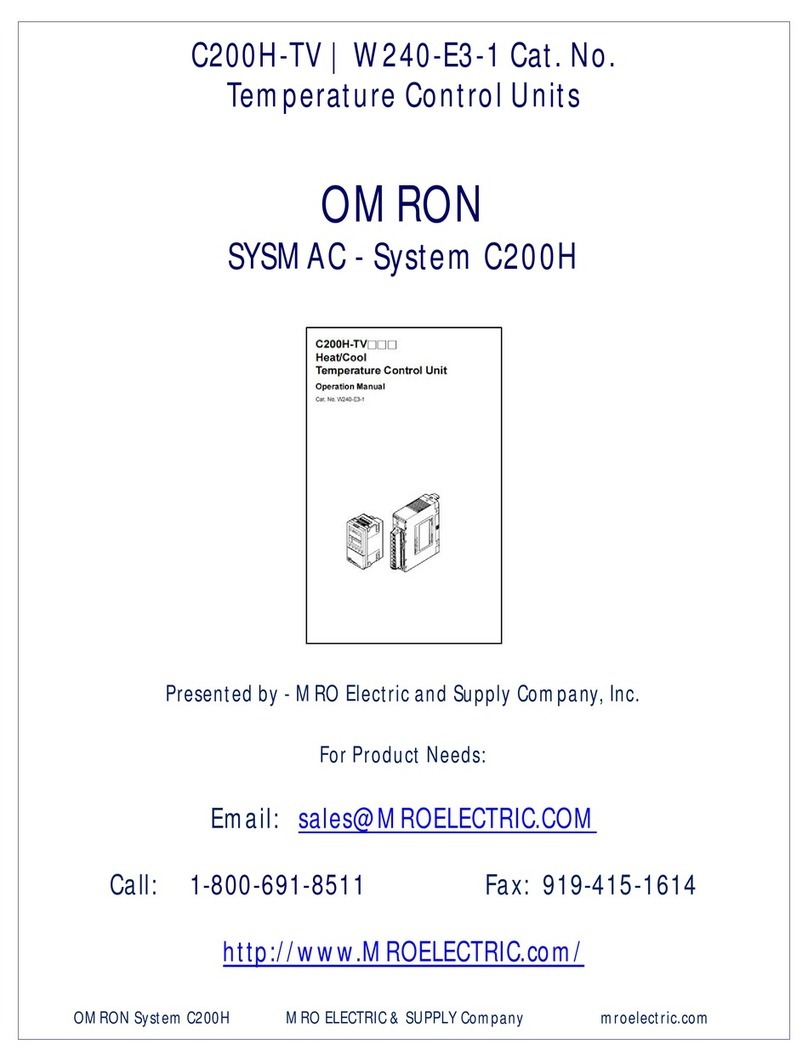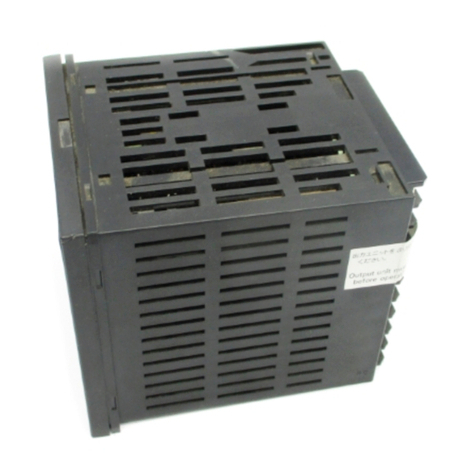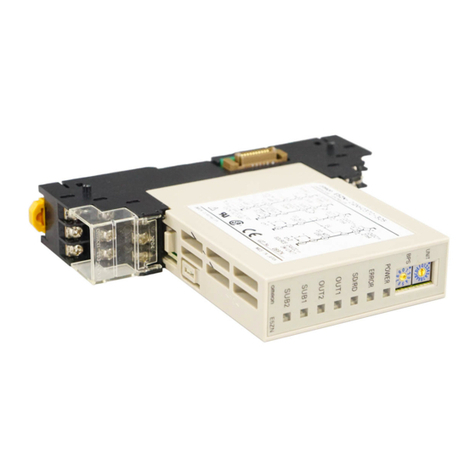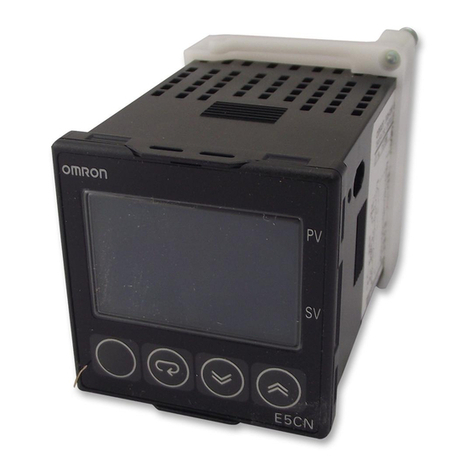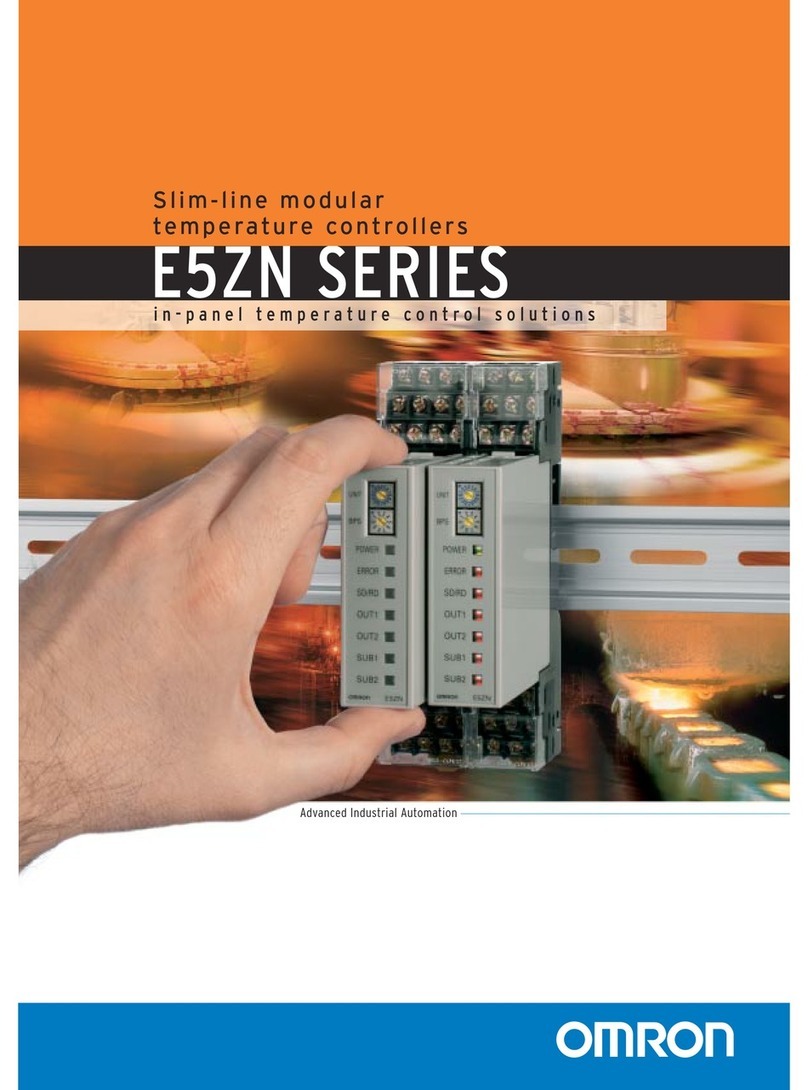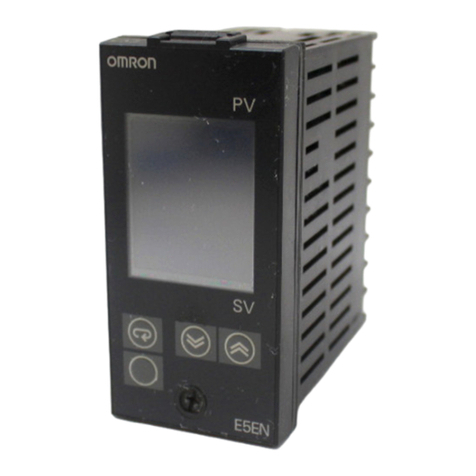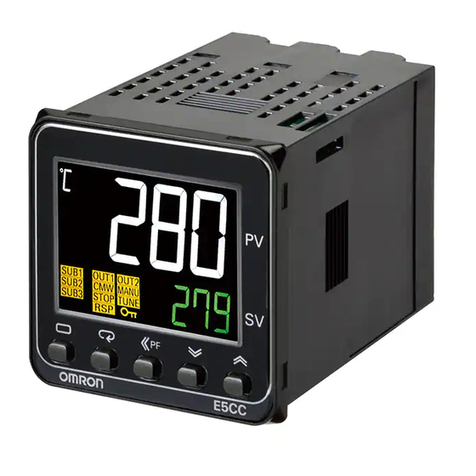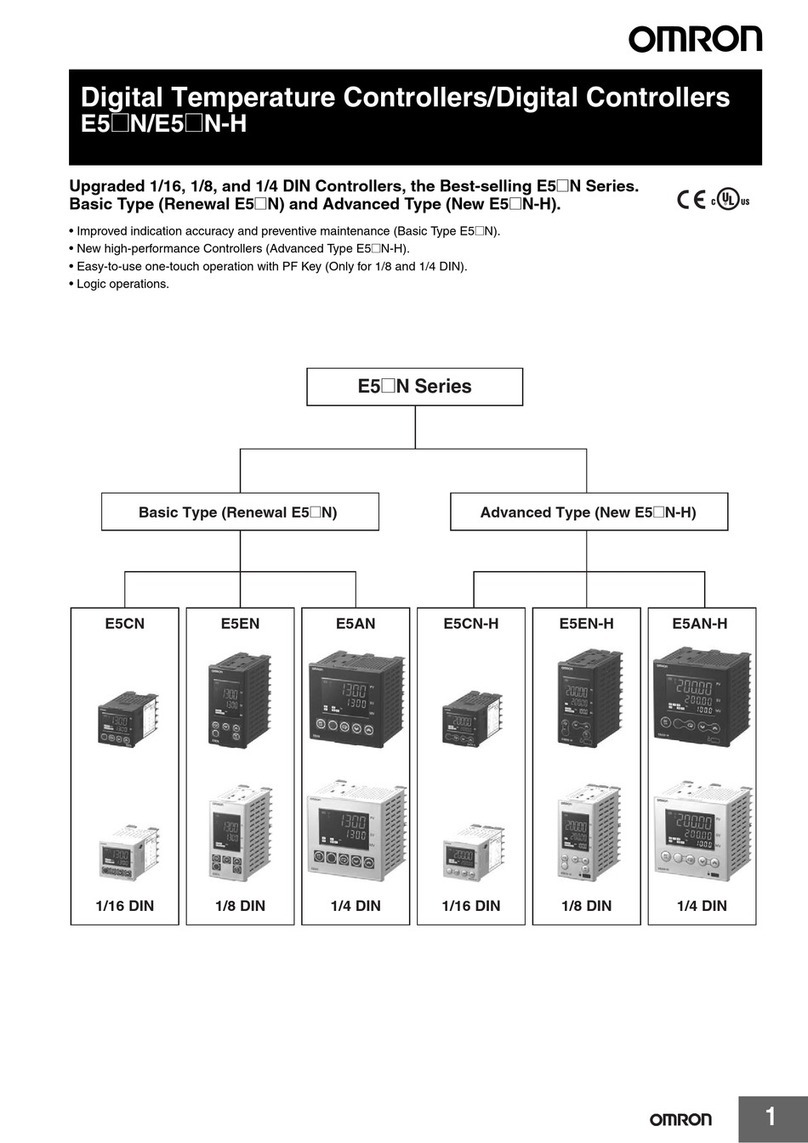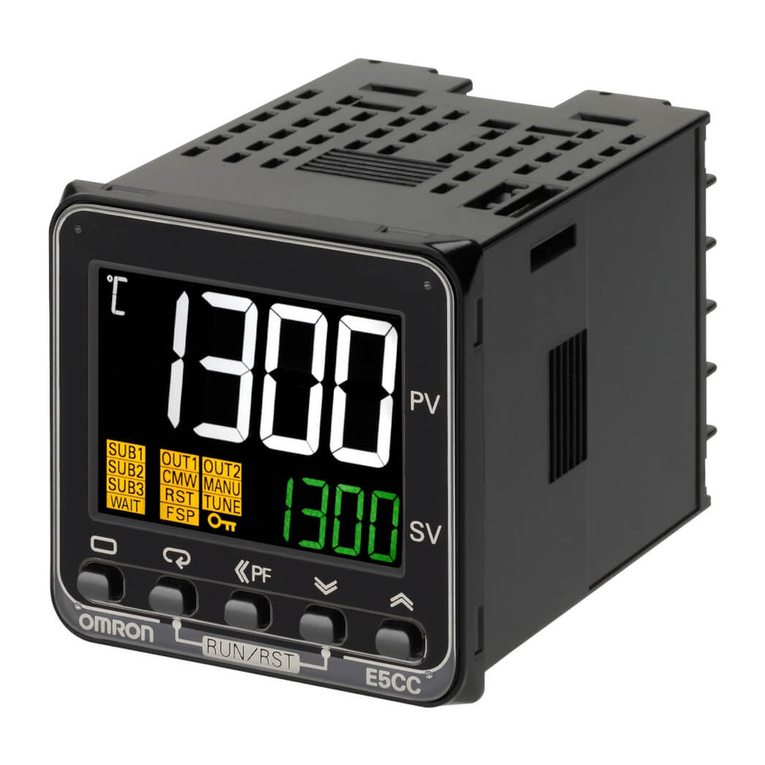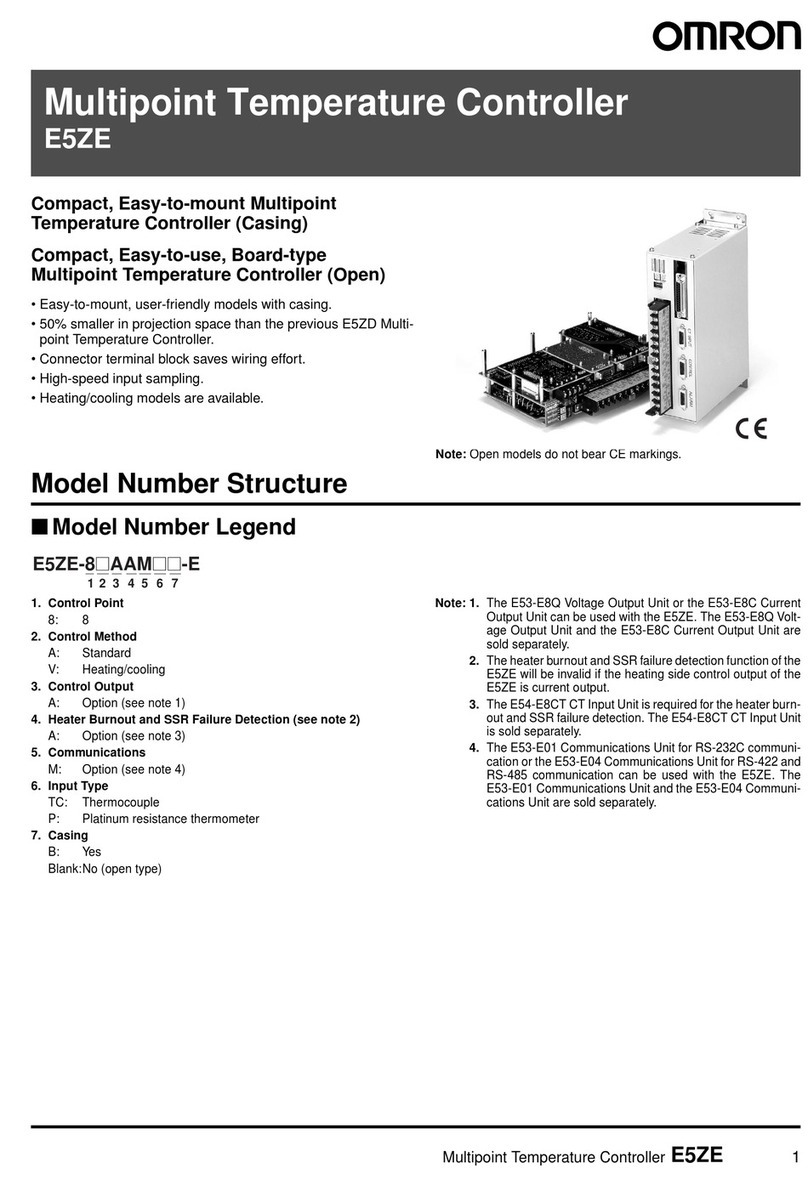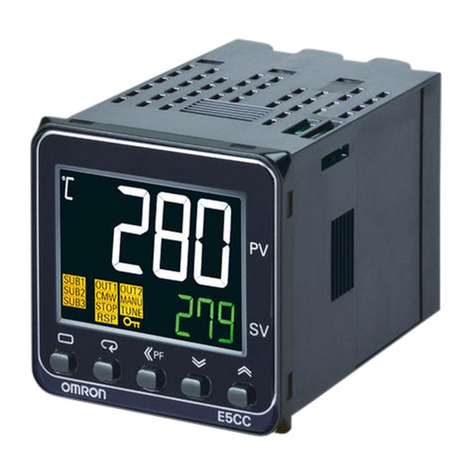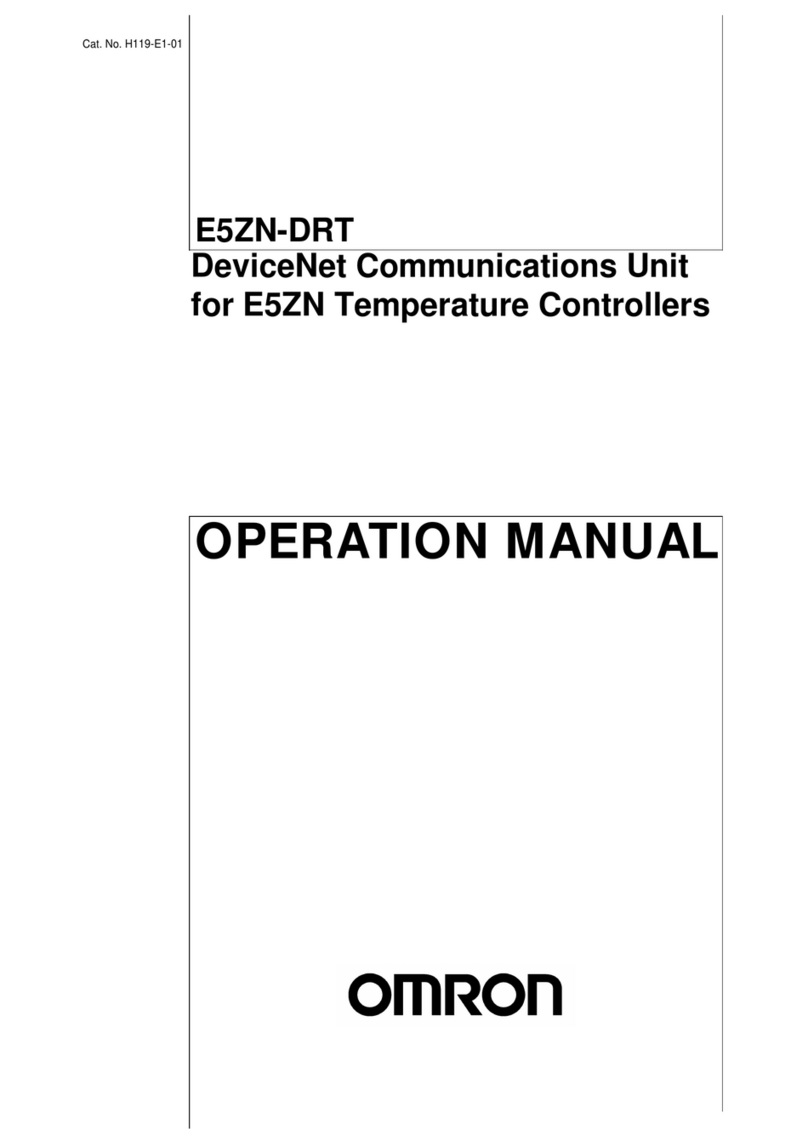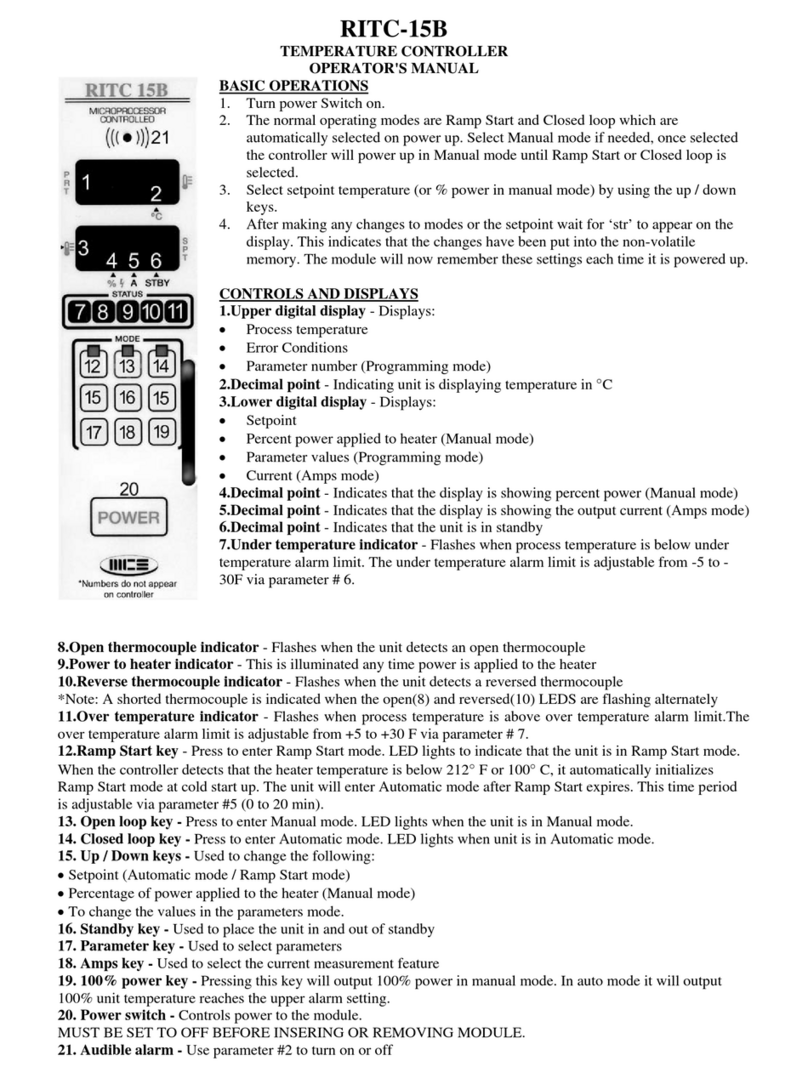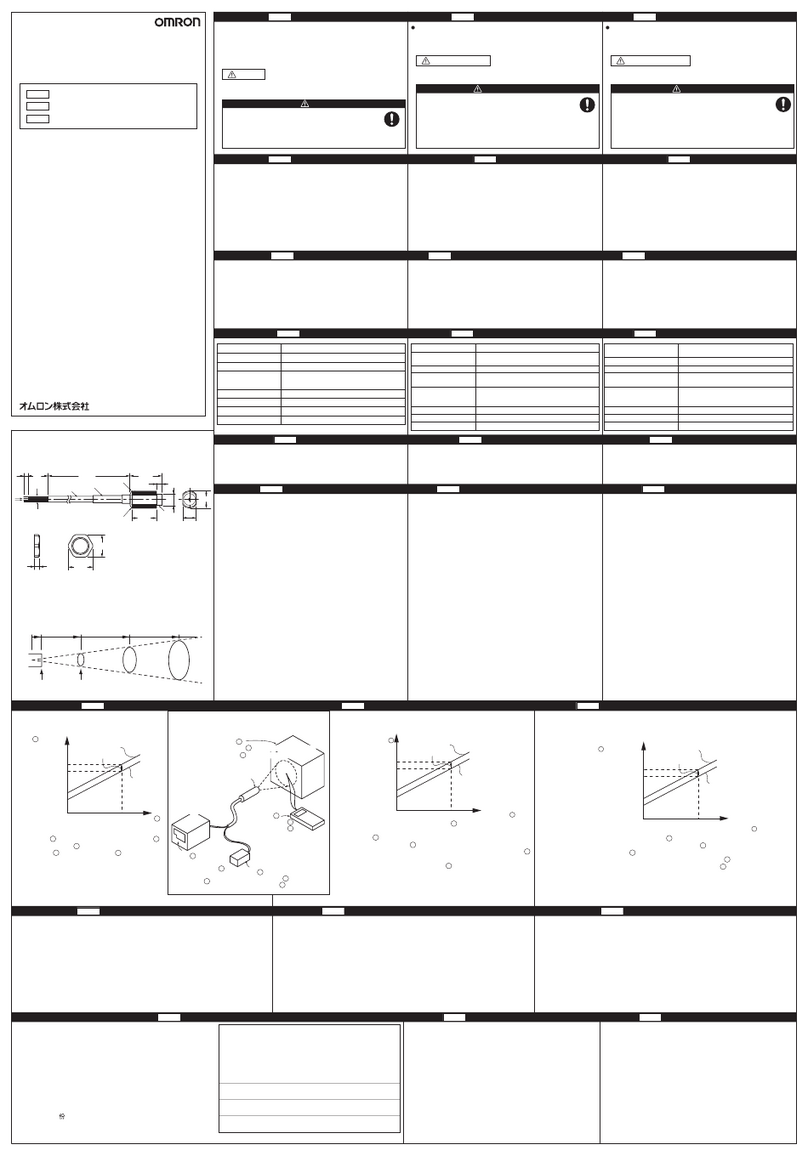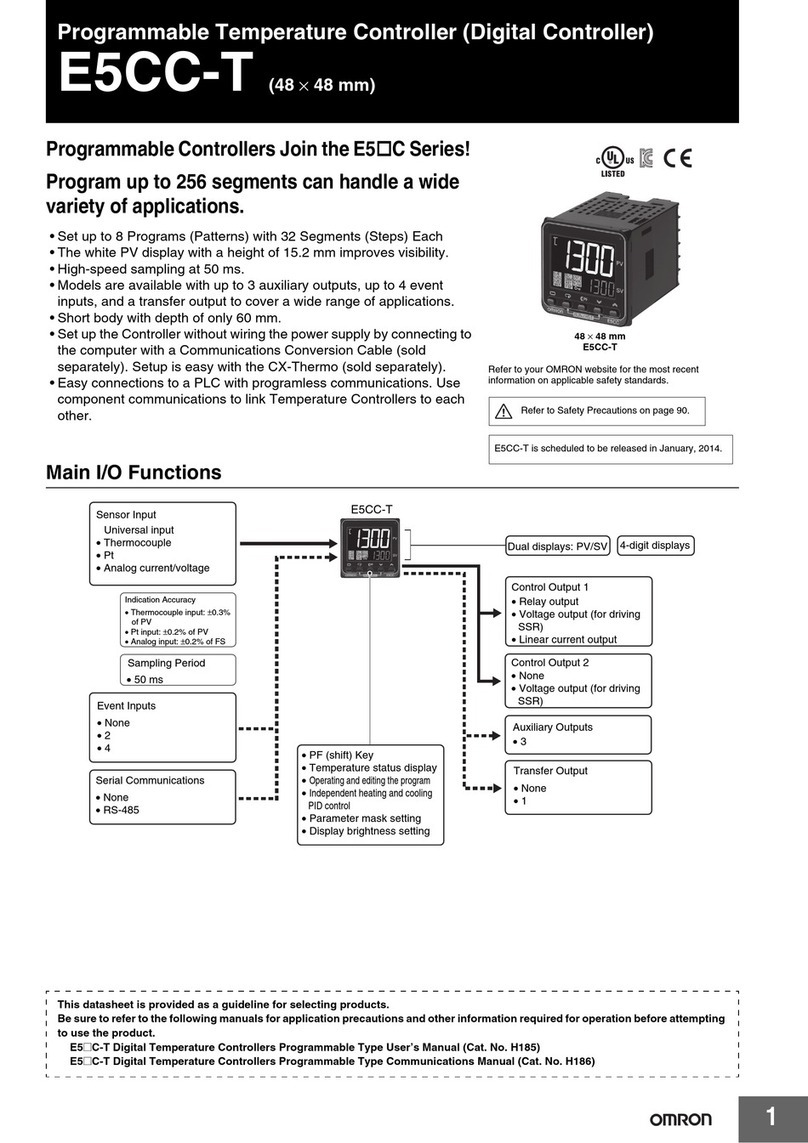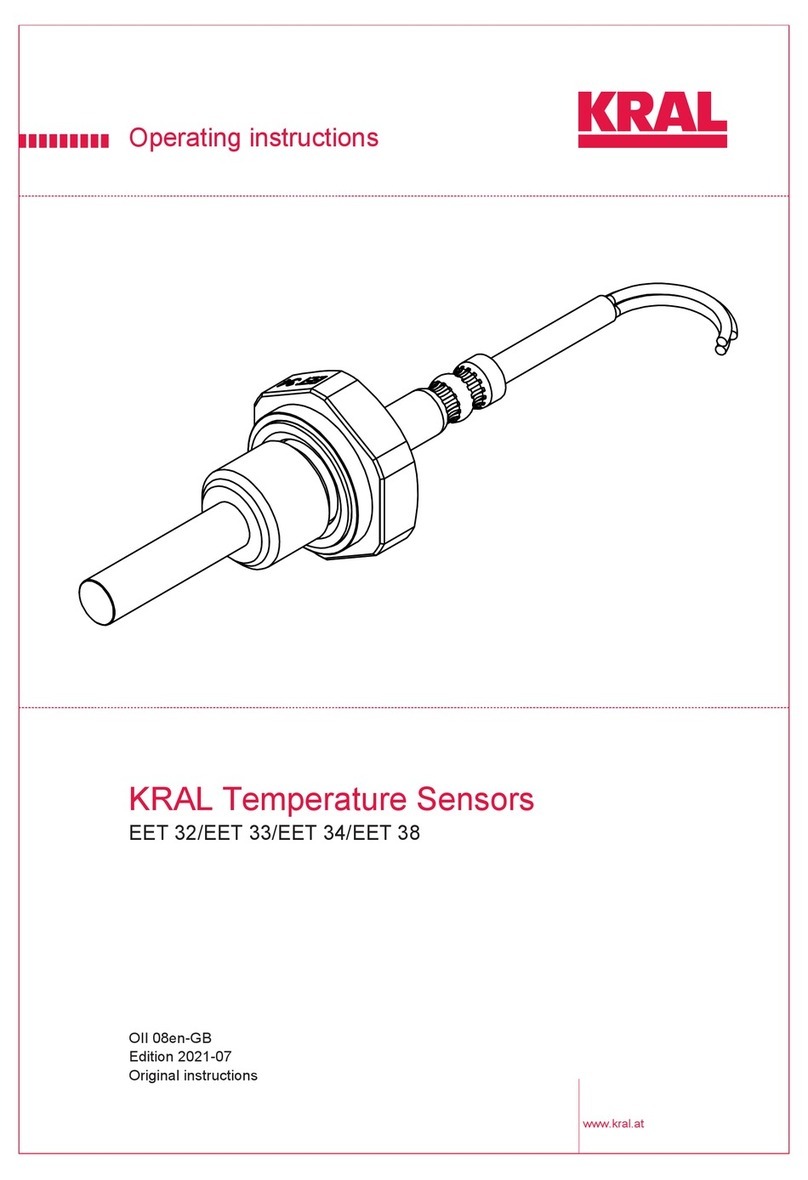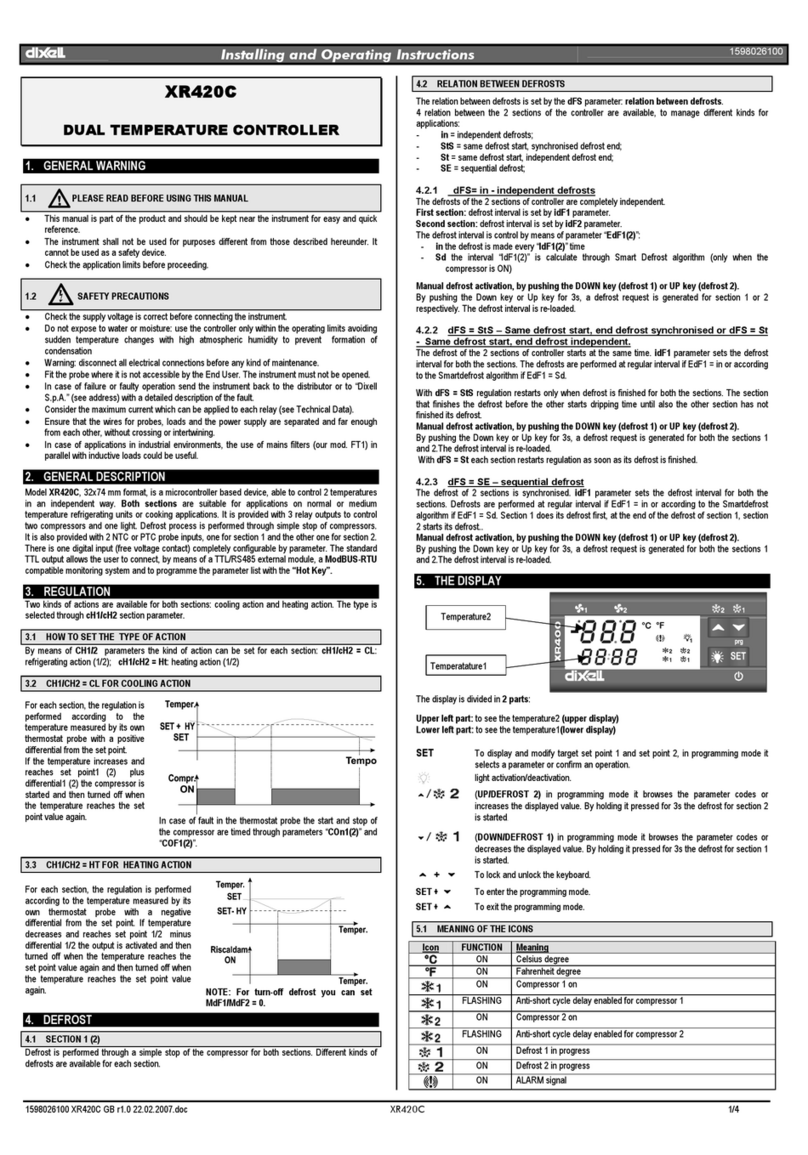
E5GN
E5GN
Specifications
RATINGS
Supply voltage 100 to 240 VAC, 50/60 Hz 24 VAC, 50/60 Hz/24 VDC
Operating voltage range 85% to 110% of rated supply voltage
Power consumption 7VA 4VA/2.5W
Sensor input Thermocouple: K, J, T, E, L, U, N, R, S, B
Platinum resistance thermometer: Pt100, JPt100
Non-contact temperature sensor: K10 to 70
C, K60 to 120
C, K115 to 165
C, K160 to 260
C
Voltage input: 0 to 50 mV
Control output Relay output SPST-NO, 250 VAC, 2 A (resistive load), electrical life: 100,000 operations
Voltage output 12 VDC (PNP), max. load current: 21 mA, with short-circuit protection
Alarm output SPST-NO, 250 VAC, 1 A (resistive load), electrical life: 100,000 operations
Control method PID or ON/OFF control
Setting method Digital setting using front panel keys
Indication method 7-segment digital display and single-lighting indicator
Other functions According to controller model
Ambient temperature -10
Cto55
C(14
F to 131
F) with no condensation or icing
Ambient humidity 25% to 85% relative humidity
Storage temperature -25
Cto65
C (-13
F to 149
F) with no condensation or icing
CHARACTERISTICS
Indication accuracy Thermocouple:
(
0.5% of indicated value or
1
C, whichever greater)
1 digit max. (See Note.)
Platinum resistance thermometer:
(
0.5% of indicated value or
1
C, whichever greater)
1 digit max.
Analog input:
0.5% FS
1 digit max.
CT input:
5% FS
1 digit max.
Hysteresis 0.1 to 999.9 EU (in units of 0.1 EU)
Proportional band (P) 0.1 to 999.9 EU (in units of 0.1 EU)
Integral time (I) 0 to 3999 s (in units of 1 s)
Derivative time (D) 0 to 3999 s (in units of 1 s)
Control period 1to99s(inunitsof1s)
Manual reset value 0.0% to 100.0% (in units of 0.1%)
Alarm setting range -1999 to 9999 (decimal point position depends on input type)
Sampling period 500 ms
Insulation resistance 20 MΩmin. (at 500 VDC)
Dielectric strength 2000 VAC, 50 or 60 Hz for 1 min (between different charging terminals)
Vibration resistance 10 to 55 Hz, 10 m/s2for 2 hours each in X, Y and Z directions
Shock resistance 300 m/s2, 3 times each in 3 axes, 6 directions (relay: 100 m/s2)
Note: The indication of K thermocouples in the -200°C to 1300°C range, and T and N thermocouples at a temperature of -100°C or less,
and U and L thermocouples at any temperature is ±2°C±1 digit maximum. The indication of B thermocouples at a temperature of
400°C or less is unrestricted.
The indication of R and S thermocouples at a temperature of 200°Corlessis±3°C±1 digit maximum.
(This table continues on the next page.)
